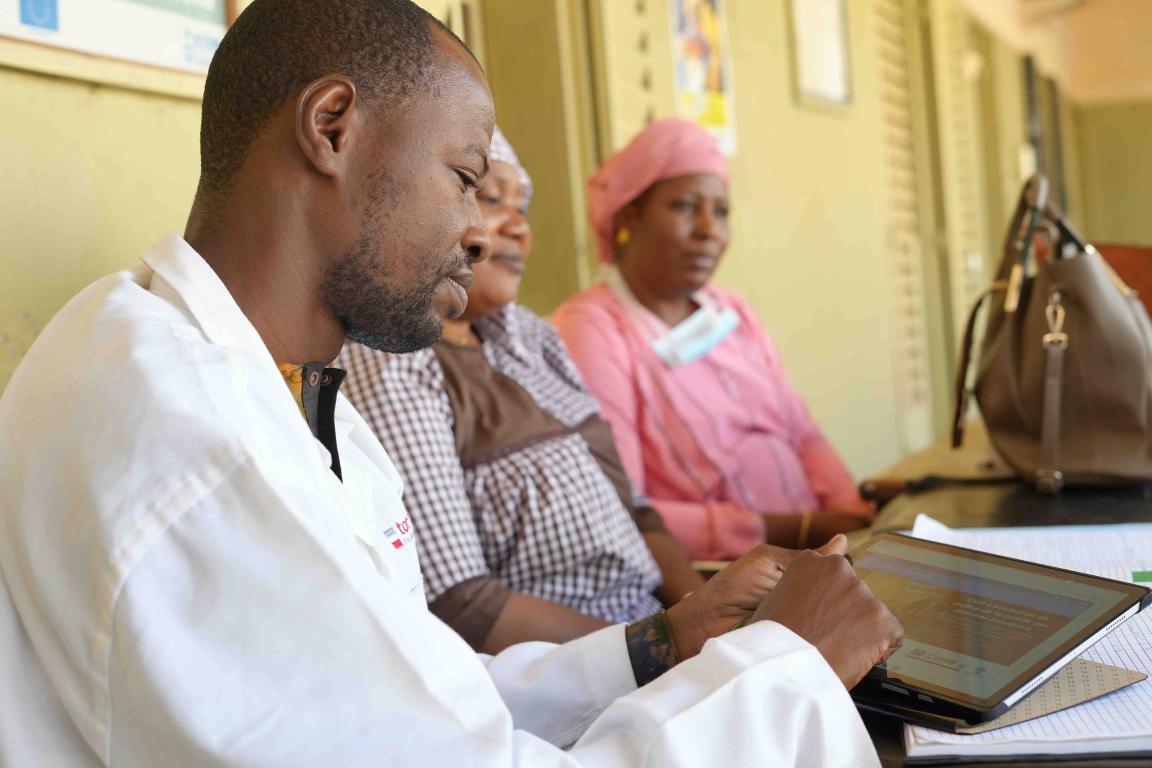While malaria is a primary cause of mortality and morbidity in Mali, the country’s fight against the disease has made encouraging progress in recent years thanks to better data management and use. For many years, data managers reported malaria data through an Excel-based system—but MEASURE Evaluation helped the country integrate this data into the routine health information system using the District Health Information System 2 (DHIS2). This integration has resulted in fewer data quality issues—and facilitated real-time access to data.
Adapting the Routine Data Quality Assessment tool for malaria
While the DHIS2 integration was a big step forward, regular malaria data quality checks have also been an important piece in the fight against the disease in Mali. Starting in 2016, the country’s National Malaria Control Program (NMCP) periodically carried out data quality audits using the Routine Data Quality Assessment (RDQA) tool. This standard data quality assurance tool helps data managers determine the level of data completeness and timeliness, evaluate the accuracy and consistency of reports over time, and develop an action plan to continuously strengthen the system.
After several years of using the tool, NMCP found that the information from health facility data quality audits was not captured completely or accurately—and it was not meeting NMCP’s specific needs. These issues made it difficult to improve malaria data quality and hindered the use of this data for making decisions. Consequently, this approach limited NMCP’s ability to accurately analyze the status of malaria control at the national and subnational levels.
So in 2020, PMI Measure Malaria supported the development of an instrument called the Malaria Routine Data Quality Assessment (mRDQA) tool. This tool helps determine the completeness and accuracy of reported data on selected data elements, such as the number of people tested for malaria and the number of confirmed malaria cases. It aims to take into account the specific quality assurance needs of malaria data. Initially Excel-based, the tool is now designed as an Android application and is linked to the national DHIS2 platform for further improvements. This transition made it possible to collect data via Android tablets and report supervision results in real time while providing appropriate visualizations in both the Android and the DHIS2 platforms—along with the ability to achieve consecutive assessment results, which will likely facilitate data quality progress tracking over time.
Integrating the mRDQA tool into DHIS2 for better data quality
To further improve malaria data quality in Mali, the mRDQA tool was customized and installed on both Android tablets and the national DHIS2 platform with CHISU support and in close collaboration with NMCP staff. More specifically, CHISU implemented the testing and necessary adaptations on the DHIS2 platform in collaboration with Direction Générale de la Santé (the General Directorate of Health) at the Hamdallaye Centre de Santé Communautaire (community health center) of Bamako District. To finalize the tool, CHISU presented the draft to the country’s Ministry of Health and its partners during a demonstration meeting in order to collect feedback for improvement. This feedback included adding an option for “not applicable” when the data that’s intended to be analyzed isn’t collected by a health facility, and improving the French translation of some indicators.

CHISU also supported the tool’s dashboard functionality to allow for the automatic compilation of data from supervised health facilities—which can optimize reporting time and provide a holistic view of data. This also allows for global visualization of the data as well as providing decision makers’ access to it anywhere and anytime.
Supporting mRDQA field implementation
CHISU supported NMCP’s organization of orientation sessions in 41 districts of the Mopti, Timbuktu, Gao, Segou, Koulikoro, and Bamako regions, and also supported them to conduct mRDQAs in 11 reference health centers and 33 community health centers of the six regions. The mRDQA tool has allowed public health stakeholders in Mali to detect data inconsistencies between the primary data collection tools (e.g., registers) and secondary data collection tools (e.g., DHIS2); to identify data quality issues; and to identify noncompliance with data quality standard operating procedures.

Today, the mRDQA tool is effective on Mali’s national DHIS2 platform and is being implemented in six regions, which includes 11 reference health centers and 33 community health centers. NMCP staff and staff in CHISU-supported regions and districts are feeling very comfortable using the mRDQA tool for regular data quality checks, tracking, and improvements.